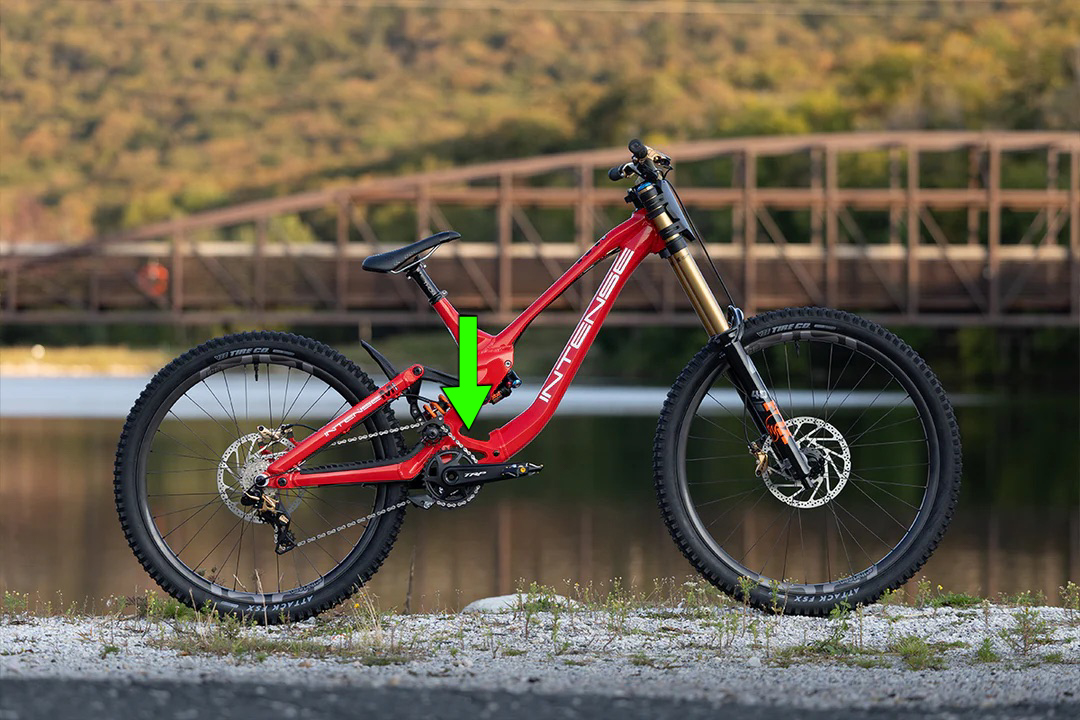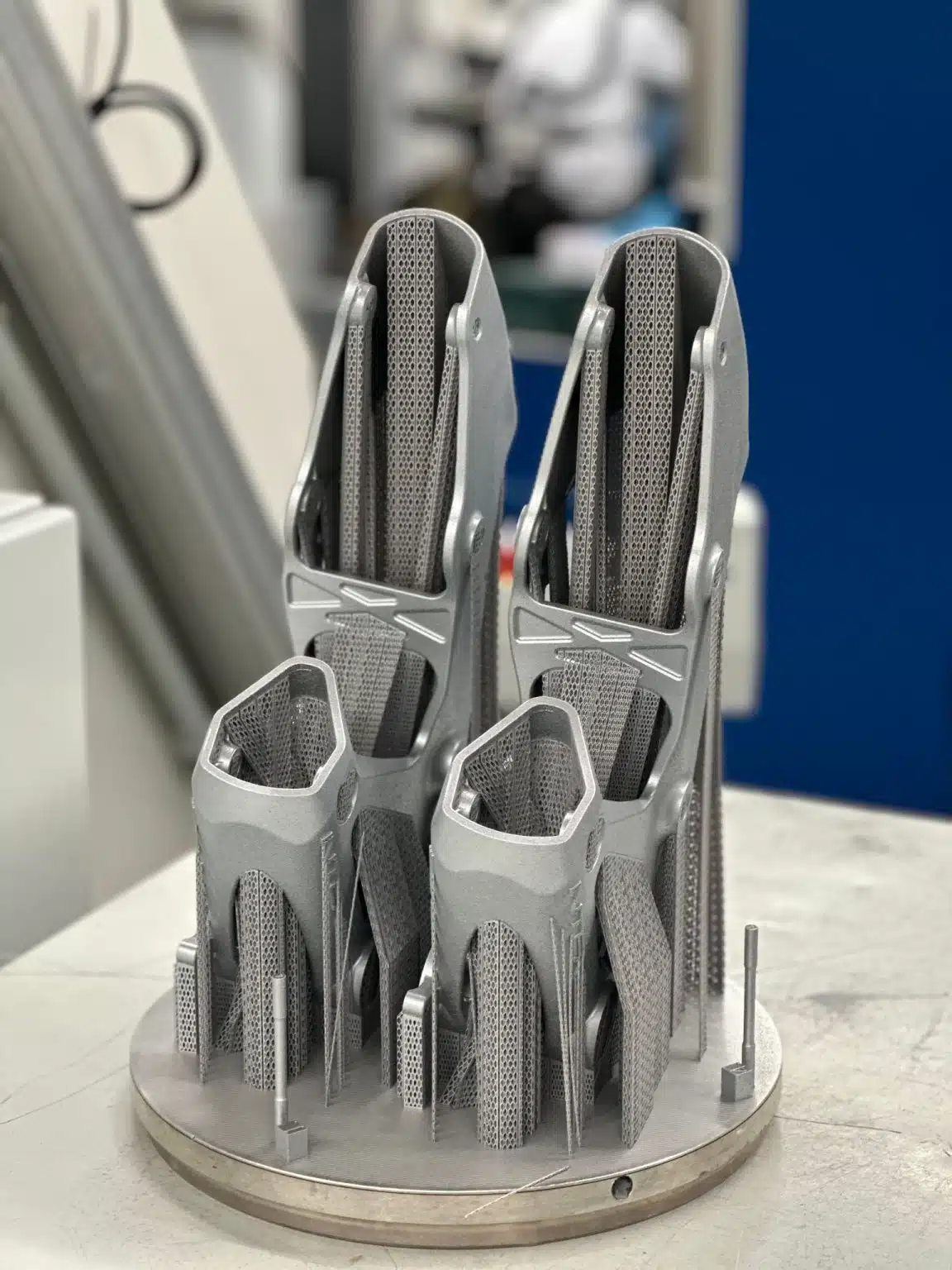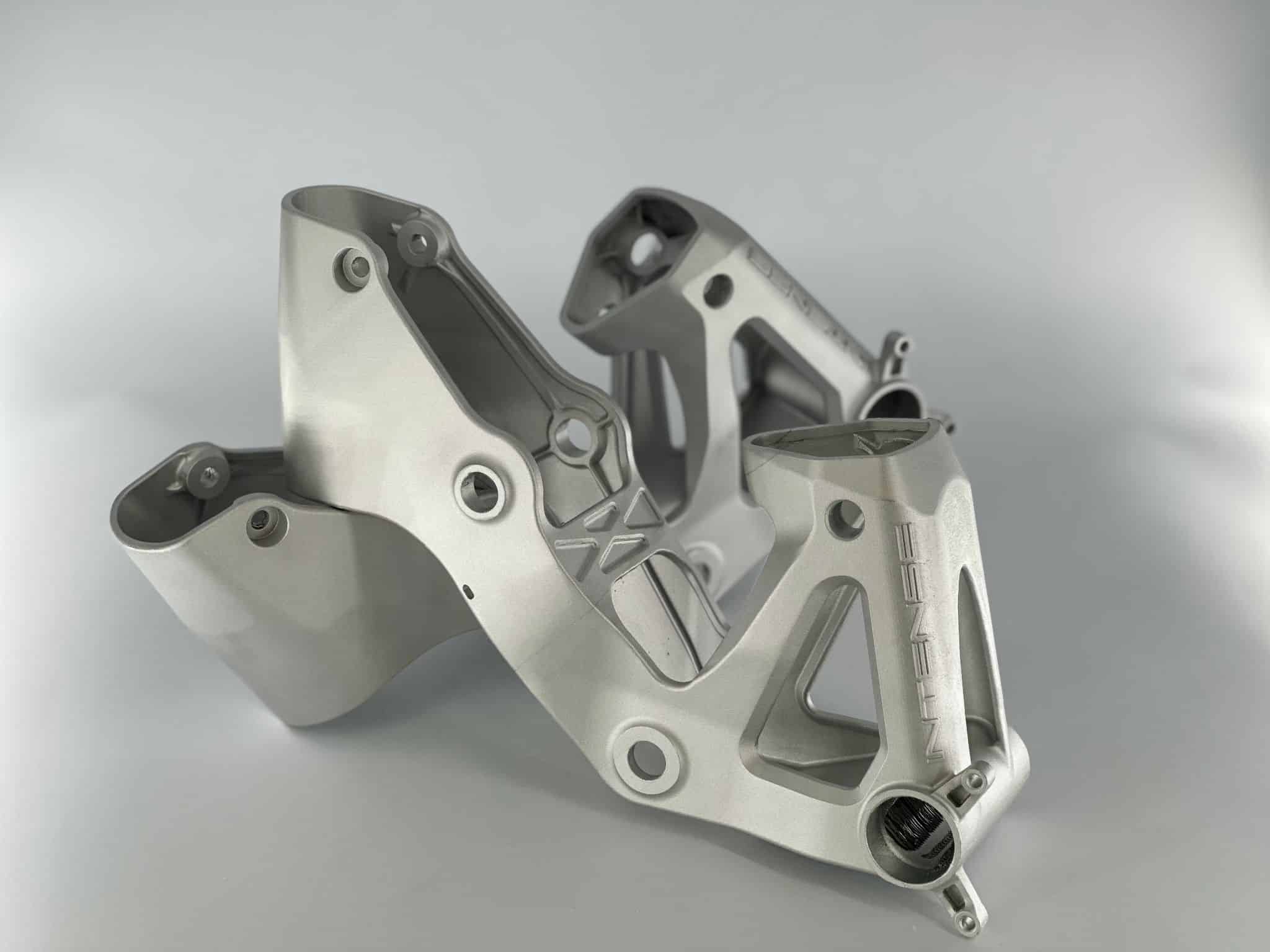INTENSE Cycles, an icon in downhill mountain biking, fully embraced additive manufacturing (AM) during its most recent project. It partnered with TRUMPF and Elementum 3D to help redesign its multi-championship winning cycle, the M1, and the prototype bike has exceeded every expectation. The company now plans to incorporate the technology into more prototypes and production parts moving forward, and also plans to use it to stay ahead of their competition on track.
If you’re into downhill mountain biking, then you probably know a bit about INTENSE. For everyone else, here’s some background: The company has been around since 1993, and was founded by CEO Jeff Steber. He is a designer, artist, and craftsman at heart, and has been tinkering with his bikes since the company started in his garage. Over time, his goal has stayed the same: make the fastest bike possible and utilize the latest technology available to do it. So, when additive came around Jeff immediately jumped at the idea and wanted to explore how this avenue could help improve his bicycles.
One of the first projects he chose was the redesign of one of his most accomplished bikes, the M1. Specifically, he wanted to manufacture the backbone, a part critical to the bike’s suspension located beside the gears, from one piece of aluminum alloy (A6061) and incorporate an innovative internal ribbing to make the part lighter and stronger. To do this, however, would require metal 3D printing as the design could not be manufactured using traditional methods.

The INTENSE M1 downhill mountain bike with a green arrow pointing to the backbone component. (Image courtesy of INTENSE Cycles)
INTENSE turned to the company that is an expert in this field and who also has experience 3D printing bicycle components and A6061, TRUMPF. The German laser experts helped INTENSE iterate through processes and prototypes and ended up optimizing the “backbone” for function and printability. The two changed the low-angle overhangs, mitigated post-processing efforts, and reduced the amount of overall material used during a print. The part was made using Elementum 3D’s A6061-RAM2 and easily incorporated into INTENSE’s current welding and heat treatment procedures for its other A6061 bike parts.

Two 3D printed backbone components for INTENSE’s M1 cycle right after printing. (Image courtesy of Elementum 3D)

Two finished 3D printed backbone components for INTENSE’s M1 cycle. (Image courtesy of Elementum 3D)
The improved M1 took 2nd at the 2023 UCI Cycling World Championships, and because of the success and performance of the 3D printed backbone, INTENSE already has plans to ramp up consumer production of this bike and begin in-house printing more components in the near future.
“I’m thankful for the great work TRUMPF and Elementum 3D provided. Their guidance and expertise played a critical role in successfully producing our new M1. I am happy to report the M1 finished 2nd at the 2023 UCI Cycling World Championships.” -Jeff Steber, Founder and CEO of INTENSE CYCLES told to Elementum 3D.
This story follows the industry trend as cycling and sports in general begin to incorporate 3D printing into their production processes. The manufacturing method is allowing companies to bypass limitations they were once held to and adds an extra dimension of agility to pivot when needed. INTENSE, like other companies who embrace this technology, are putting themselves in the driver’s seat and making sure they are doing everything they can to stay ahead of their competition in store and on-track.
Subscribe to Our Email Newsletter
Stay up-to-date on all the latest news from the 3D printing industry and receive information and offers from third party vendors.
You May Also Like
Gorilla Sports GE’s First 3D Printed Titanium Cast
How do you help a gorilla with a broken arm? Sounds like the start of a bad joke a zookeeper might tell, but it’s an actual dilemma recently faced by...
Nylon 3D Printed Parts Made More Functional with Coatings & Colors
Parts 3D printed from polyamide (PA, Nylon) 12 using powder bed fusion (PBF) are a mainstay in the additive manufacturing (AM) industry. While post-finishing processes have improved the porosity of...
$25M to Back Sintavia’s Largest Expansion of Metal 3D Printing Capacity Since 2019
Sintavia, the digital manufacturing company specializing in mission-critical parts for strategic sectors, announced a $25 million investment to increase its production capacity, the largest expansion to its operations since 2019....
Velo3D Initiates Public Offering in a Bid to Strengthen Financial Foundations and Drive Future Growth
Velo3D (NYSE: VLD) has been among a number of publicly traded 3D printing firms that have attempted to weather the current macroeconomic climate. After posting a challenging financial report for 2023,...































